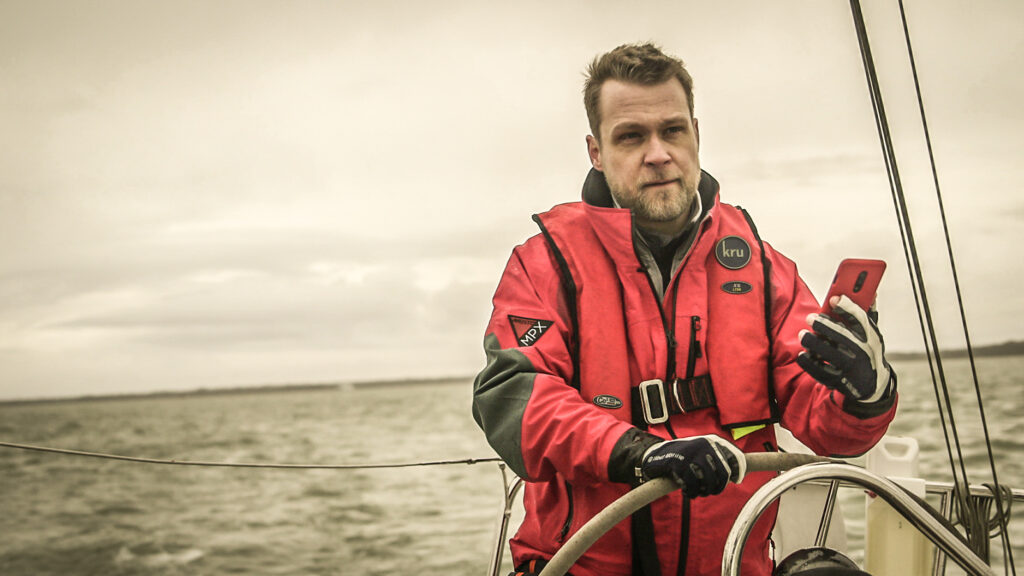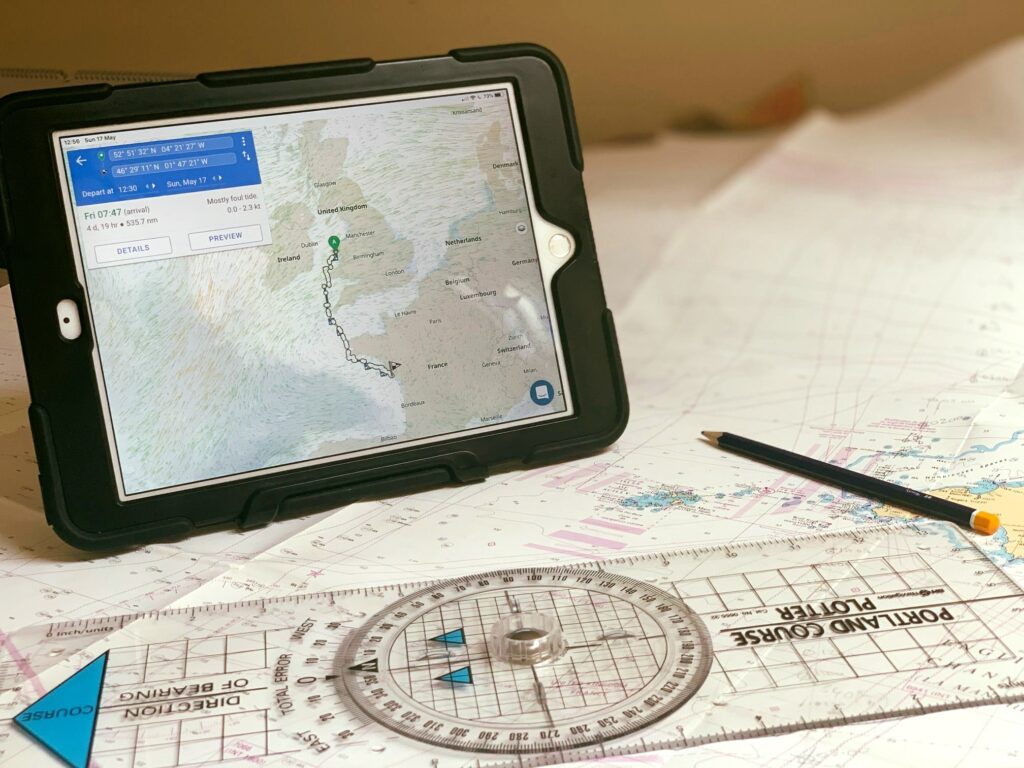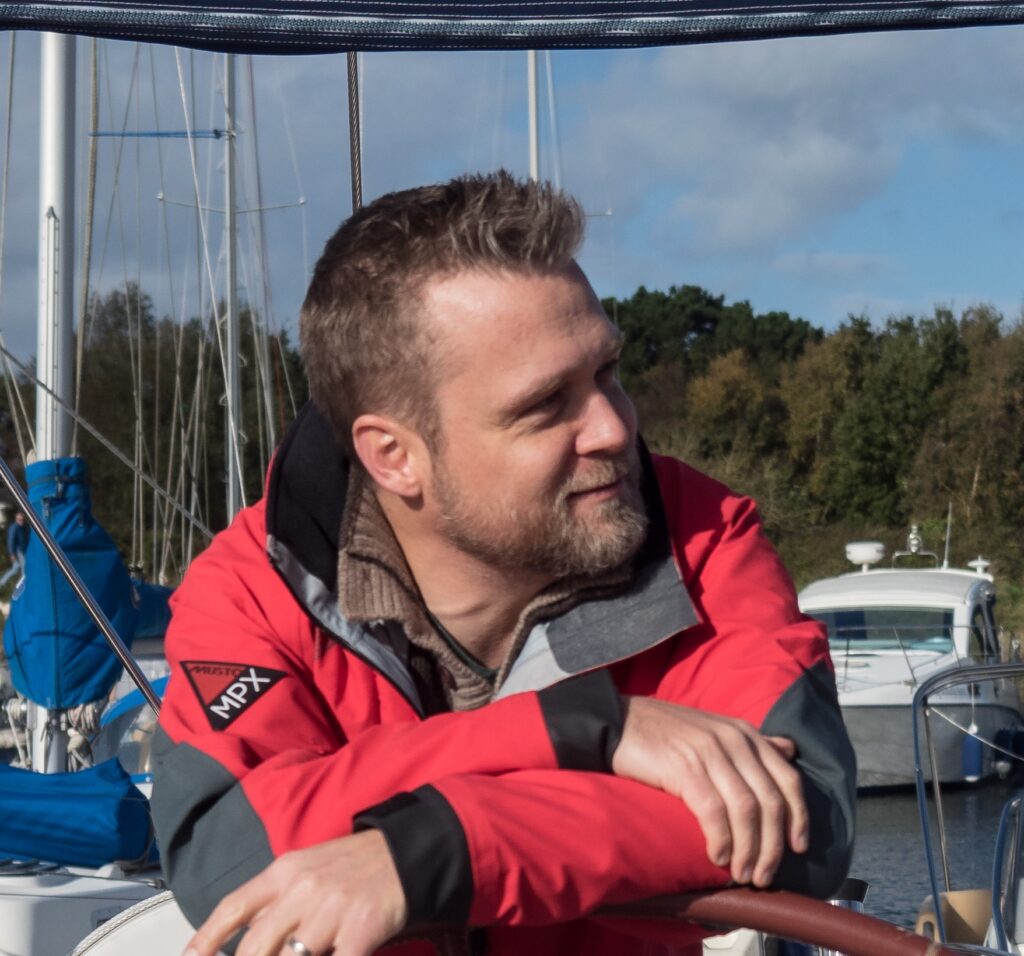Fast forward from an epiphany in the navigation station on a round-the-world yacht race in 2014 to today and marine tech company savvy navvy, founded by Jelte Liebrand, has just finished its most successful year yet.
Ex-Google software engineer and avid sailor Jelte explains how he left corporate life to found savvy navyy, often dubbed ‘Google maps for boaters’, now enabling hundreds of thousands of users across the globe to a safer and easier way to navigate at sea.
The idea is simple. A navigation app that saves boaters across the globe hours of planning, chart work and route plotting with something they always have on them – their phone. Simplicity and safety are the key themes for savvy navvy. The vision of the navigation app launched in 2017 by Jelte and co-founder Kevin O’Neill is all about removing unnecessary complex chart data that often confuses leisure boaters, for the safety and ease of use, enabling better navigation to every boater on the water.
Jelte, tell us more about how your idea for savvy navvy started?
I’ve sailed since I was eight-years-old and took part in the Clipper Round the World Yacht race back in 2014. When I was down in the nav-station mid-Pacific, I was trying to figure out the best course down to Panama for the race. Should we stay in-shore, off-shore, choices about currents, weather and trying to compute what options are best. While heeled over at a 30-degree angle, holding on, I was desperately trying to look at the chartplotter, complex maps, and use a mouse on a laptop. I thought to myself that there must be an easier way to do this. So that’s really where the idea started.

What happened next?
I started talking to other people initially on the Clipper boat. And other people who had their own boats and I was starting to find that a lot of these people have similar problems, even on their leisure sailing, not just on a race in the middle of the Pacific. Even down in the Solent, if you want to go from A to B, a lot of people were saying they weren’t doing it because they were afraid that they would get the tidal calculations wrong, or that they would hit a sand bank and go aground or other things that would stop them from getting out on the water.
When I got back from the race, conversations progressed, and I realised there was a really big opportunity to make sailing and motorboating a much more pleasant and easier experience which would ultimately get more people out enjoying time on the water.
One thing is the idea – the next is leaving your day-job at Google to set up a navigation app business. How did this develop?
As an engineer, a job at Google is probably one of the best places to work. So, it did take me quite a while to decide to take that ‘leap’ and pursue my dream of savvy navvy. I became a dad, we moved back to the UK from San Francisco and my priorities changed. I figured that if I don’t try this, step out of my comfort zone and give it a go, I’ll just regret it forever.
Once you were set up, what was the first thing you did?
Absolutely fundamental for me was – and still is – that savvy navvy is about the user experience. I bought myself a clipboard, figuring all official looking people own clipboards, and simply stood in countless marinas interviewing sailors about their experiences. I wanted to know their problems. Their actual pain points. The various issues whether navigating the Solent in the UK or the waters around Miami. Whether on a yacht race or leisure sailing.
Understanding what the pain points are from our customers is absolutely critical and one of the reasons why we’re so open, so transparent, so direct. If there’s something we’ve done that’s caused a problem for someone, then we want to know about it, so we can address it. I think that’s one of the biggest things that sets us apart from others: we listen, we’re open, we’re transparent. We really want to hear the views from our hundreds of thousands of users and ultimately together make a better product and a better boating experience for anybody out on the water.
You mention some savvy navvy values here. Can you expand on them a bit more?
Our view is that everyone should and can enjoy boating. This sets the tone for everything we do and in order to achieve it, we need to break down barriers and remove intimidation factors and friction points, which to be frank, this industry has a lot of. Remove some of the intimidation factors that exist around sailing and boating in general. When stepping onto a boat, everything is new.
Everything has different names. There is lots to learn and then you add difficult technology into the mix. Seeing a chart plotter, it’s all squiggly lines, cluttered and super complex. If you do not understand every single symbol on there, it might stop people from enjoying sailing or stop them from wanting to learn. Or even worse, some people may just ignore it completely and head out completely ignorant of the dangers.
So, being open, unpretentious and approachable, as well as ease of use factor is really at our core. We don’t say, this is the way it should be and that’s our finished product. We want to get everyone involved and have an all-inclusive approach to ensure we reach that aim of enjoying being on the water.

Some have criticised that your navigation app is too basic – what do you say to that?
We go out of our way to be different and make sure that what we present is clutter-free easy to understand without sacrificing safety. As boaters there are things we of course need to know – hazards, light sequences, shallows, reefs and such, but there are also lots of additional things traditionally shown on charts that are irrelevant to leisure sailors. We don’t need to know things like submarine cables at the bottom if I’m in 200m deep water and am not anchoring. It just confuses matters.
We have a great team of experts, including our UX lead designer who is a cartographer by trade and we work together to create what we hear from users they need. A recent review came through saying their navigation on board had failed in the middle of the ocean, but they had their savvy navvy app in their pocket and had downloaded charts for offline use, so got home safe and sound. You never get tired of hearing these sorts of stories – it’s exactly what we set out to do.
You’ve grown hugely since setting up in 2017 to recently announcing your record year for 2021. How have things developed?
I think our crowdfunding campaigns over the last few years have really put savvy navvy on the map. Our first campaign went viral and within six days we had to close it down. People really understood that we are trying to do something that makes a difference for boaters out there.
After pressing a giant pause button on our plans in 2020 due to the pandemic, it’s just accelerated as lockdowns eased and it seems like everybody is buying boats, which has led to a huge boom in our user numbers globally. We launched to motorboaters in 2019, which has really taken off and today roughly 75 percent of our new users are motorboaters.
We have doubled our revenue in the last quarter of 2021 and have been smashing all our crowdfunding growth campaign targets we set for the year with hundreds of thousands of users in more than 100 different countries globally. Working directly with end-users has also enabled us to make a better product that meets the current market demand to simplify boating navigation.
What are some of your latest navigation app updates and features?
We are constantly evolving, changing and pushing new innovation based on user feedback and growing markets. We actually built our whole tech stack in such a way that we are able to make updates daily. Chart styles have recently changed, we have added a ground-breaking departure scheduler tool comparing passage times, as well as weather and tide information. Soon we’ll enable users to see 3D terrain along coastlines, making a huge difference to both safety and confidence when navigating trickier waters. By the time this goes out we’ve probably added ten more!
One of your other growth areas is partnerships. Why is this important to savvy navvy?
Anyone who wants to innovate in any industry needs partnerships. You can’t go at it alone. This year alone savvy navvy’s partnerships have increased ten-fold now covering each of its global regions, including everything from marinas, smart boat sensor products, specialist boat insurers and all-electric boat manufacturers. There are a lot of really clever things happening in boating right now – and anyone that brings innovation and ease of use and helps the boater, is someone we’re keen to collaborate with.

It sounds like a lot more is coming. What are the plans for the future?
Reflecting back, a lot has been achieved from that idea mid-Pacific in the nav station. We’re a relatively small team and it’s been very gratifying to build savvy navvy with them to where we are today.
Heading into our fifth year, lots more is coming in 2022. Exciting developments such as driving engagement, innovating and using technological advances to integrate with onboard systems like AIS and NMEA2000. More partnerships lie ahead, including work with sustainable partners, looking at options like mapping out electric charging points for electric boats of the future and much more that I can’t quite talk about yet. But my dream of savvy navvy being in every boater’s pocket is certainly moving closer!
To find out more about savvy navvy or Jelte and his team visit www.savvy-navvy.com. You can also hear more about savvy navvy’s growth in the latest episode of their award-winning boating podcast ‘The Boating Life’ live now.

























